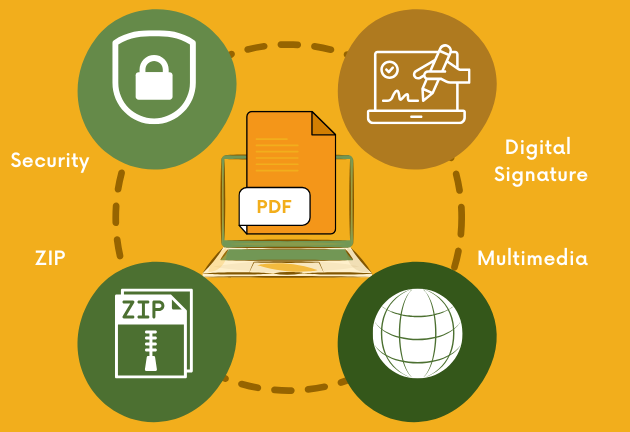PDF File Format: Features, Benefits & Uses | Complete Guide
Publish By:- CodeInputs
Introduction
The Portable Document Format (PDF) is a widely used file format for sharing and preserving documents. Created by Adobe Systems in 1993, PDFs maintain document formatting across different devices and operating systems. This guide explores the history, key features, benefits, and common uses of PDF files.
The Evolution of the PDF Format
PDFs were developed to provide a standardized way of sharing documents while ensuring their original formatting remained intact. Initially, PDFs required proprietary software, but with the introduction of Adobe Acrobat Reader, they became widely accessible. In 2008, the PDF format was officially recognized as an open standard by the International Organization for Standardization (ISO), further cementing its importance.
Key Features of PDF Files
- Universal Compatibility – PDFs can be accessed on any device without altering the original layout.
- Security & Protection – Encryption, password protection, and digital signatures enhance document security.
- Optimized File Size – Compression allows for efficient storage and sharing without significant quality loss.
- Multimedia Integration – Supports text, images, hyperlinks, videos, and interactive elements.
- Electronic Signatures – Enables digital signing, reducing the need for physical paperwork.
- Searchable & Editable – Optical Character Recognition (OCR) makes scanned PDFs searchable and modifiable.
Benefits of Using PDFs
- Cross-Platform Functionality – PDFs work on Windows, macOS, iOS, Android, and more.
- Professional Presentation – Maintains consistent formatting across all platforms.
- Robust Security – Offers encryption and password protection for sensitive files.
- Space-Saving Format – Compresses large files without major quality degradation.
- Customizable & Interactive – Allows users to edit content and include fillable forms.
Common Applications of PDFs
- Business & Legal Documents – Contracts, agreements, and official records benefit from PDF security features.
- E-Books & Research Papers – A preferred format for distributing books and academic materials.
- Job Applications & Portfolios – Ensures resumes and portfolios maintain their intended format.
- Educational Resources – Widely used for distributing study materials and assignments.
- Medical & Government Records – Trusted for securely storing official and medical documents.
Creating and Editing PDFs
Several tools make it easy to create and modify PDFs:
- Adobe Acrobat – A leading software for PDF creation, editing, and management.
- Microsoft Word & Google Docs – Documents can be directly saved as PDFs.
- Online PDF Tools – Websites like Smallpdf and ILovePDF offer editing, conversion, and compression features.
- Mobile Apps – Apps like Adobe Scan allow users to convert scanned documents into searchable PDFs.
Conclusion
The PDF format remains a crucial tool for document management, offering security, compatibility, and professional presentation. Whether for personal, business, or academic use, PDFs continue to be the go-to choice for sharing and preserving documents.
How do you use PDFs in your daily workflow?
Recent Post
Recent Comment
No Comments to Show